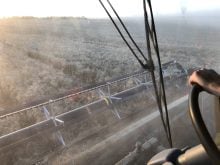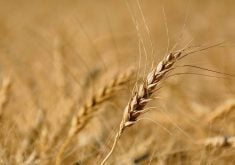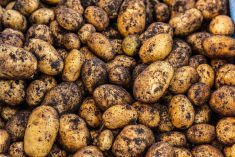The Canadian Grain Commission (CGC) is ending the 1.1 per cent “rebound factor” licensed primary elevators are now allowed to use to calculate the moisture shrinkage deducted from farmers on grain the elevators have dried.
The CGC will continue to regulate how moisture shrinkage is calculated. The 1.1 per cent will be replaced with a reference to a moisture level of 0.1 per cent below the fixed minimum tough moisture level specified for that grain in the Canadian Grain Commission Order Off Grades of Grain and Grades of Screenings, according to a CGC consultation paper.
Read Also

New ranking elevates Assiniboine College to national research elite
Brandon’s Assiniboine College is 47th in a national ranking measuring research dollars and output at publicly funded institutions in Canada.
Currently elevators that dry grain cannot charge for drying to less than 1.1 per cent below the fixed minimum tough moisture level specified for that grain.
For example, with wheat with a fixed minimum tough moisture value of 14.6 per cent, the lowest moisture value an elevator can use to calculate moisture shrinkage allowance is 13.5 per cent (14.6 per cent less 1.1 per cent).
This 1.1 per cent below the fixed minimum tough moisture level was introduced for two reasons, the CGC says. The first was to compensate elevators for moisture rebound. It occurs because artificially drying grain causes the outside of the kernel to dry, leaving the centre with a higher moisture content. After a period of time, the moisture from the centre migrates outward.
It is impossible to determine the actual moisture content of grain for up to 24 hours after artificially drying it. The moisture result immediately after drying will be lower than the result after moisture rebound. Regardless, the actual moisture and weight of the kernel remain fixed during the rebound process.
The second was to ensure that elevators did not excessively charge farmers for moisture rebound and ensure that elevators did not overdry grain to take advantage of the weight reduction from the producer and then use the extra dry grain to naturally dry or blend a separate lot of tough grain.
Farmers can negotiate a drying deduction of less than 1.1 per cent before their grain is dried but it’s become common for primary elevators to apply the 1.1 per cent factor, the CGC says.
“Producers routinely question why the weight reduction (moisture shrinkage allowance) for dried grain is 1.1 per cent below the fixed minimum tough moisture for that grain when the kernel’s actual moisture and weight may not change during the rebound process.”














